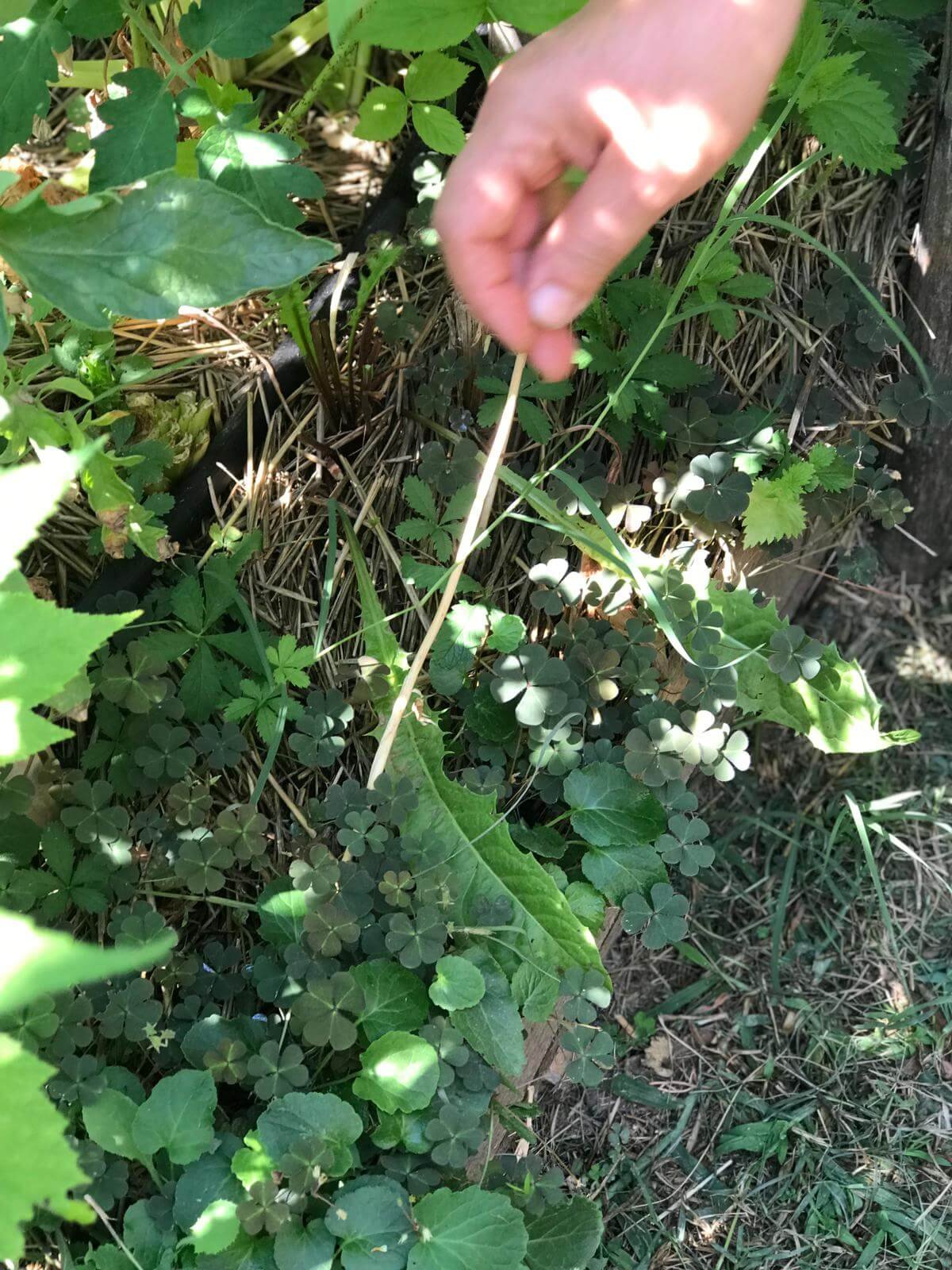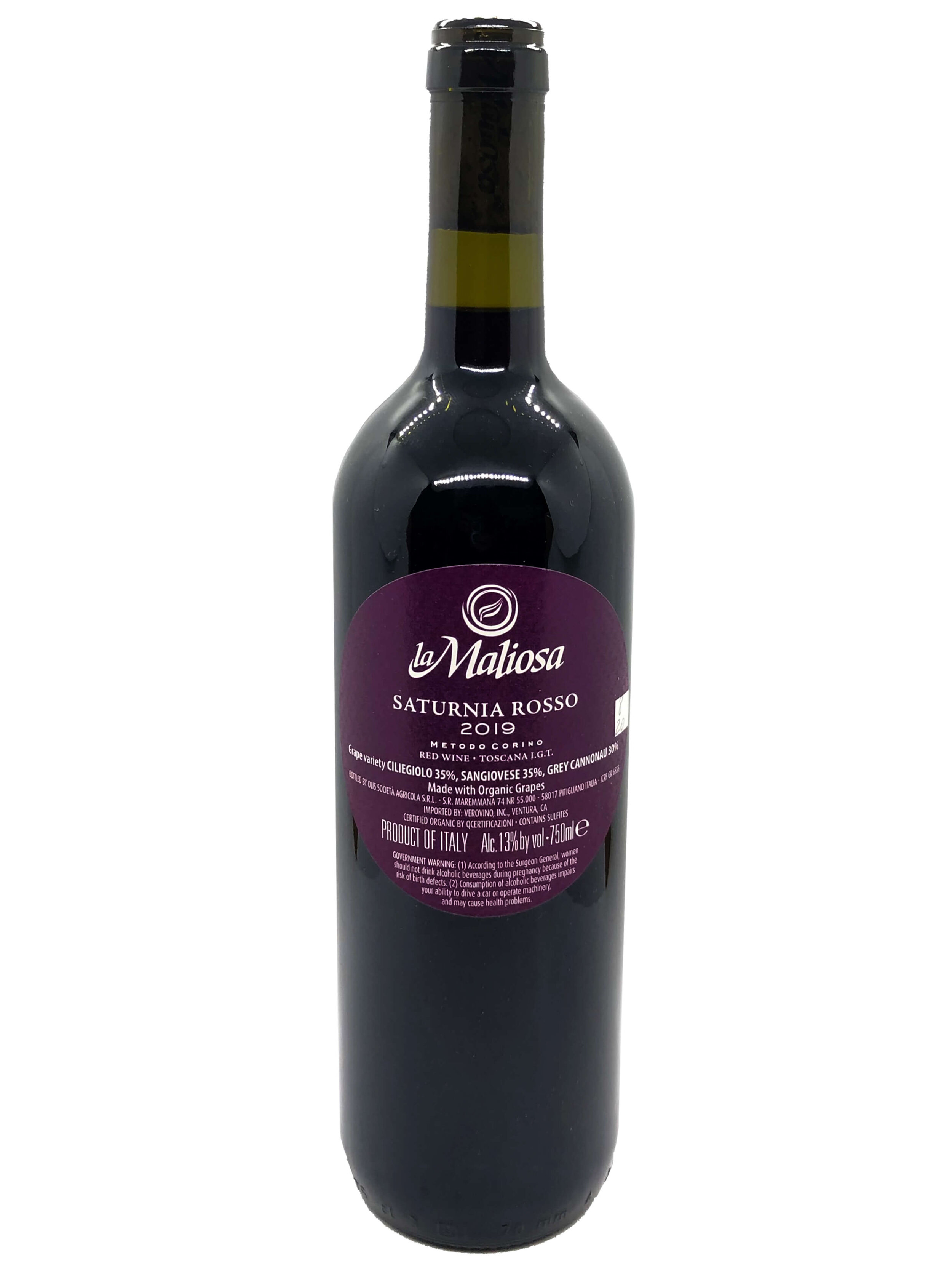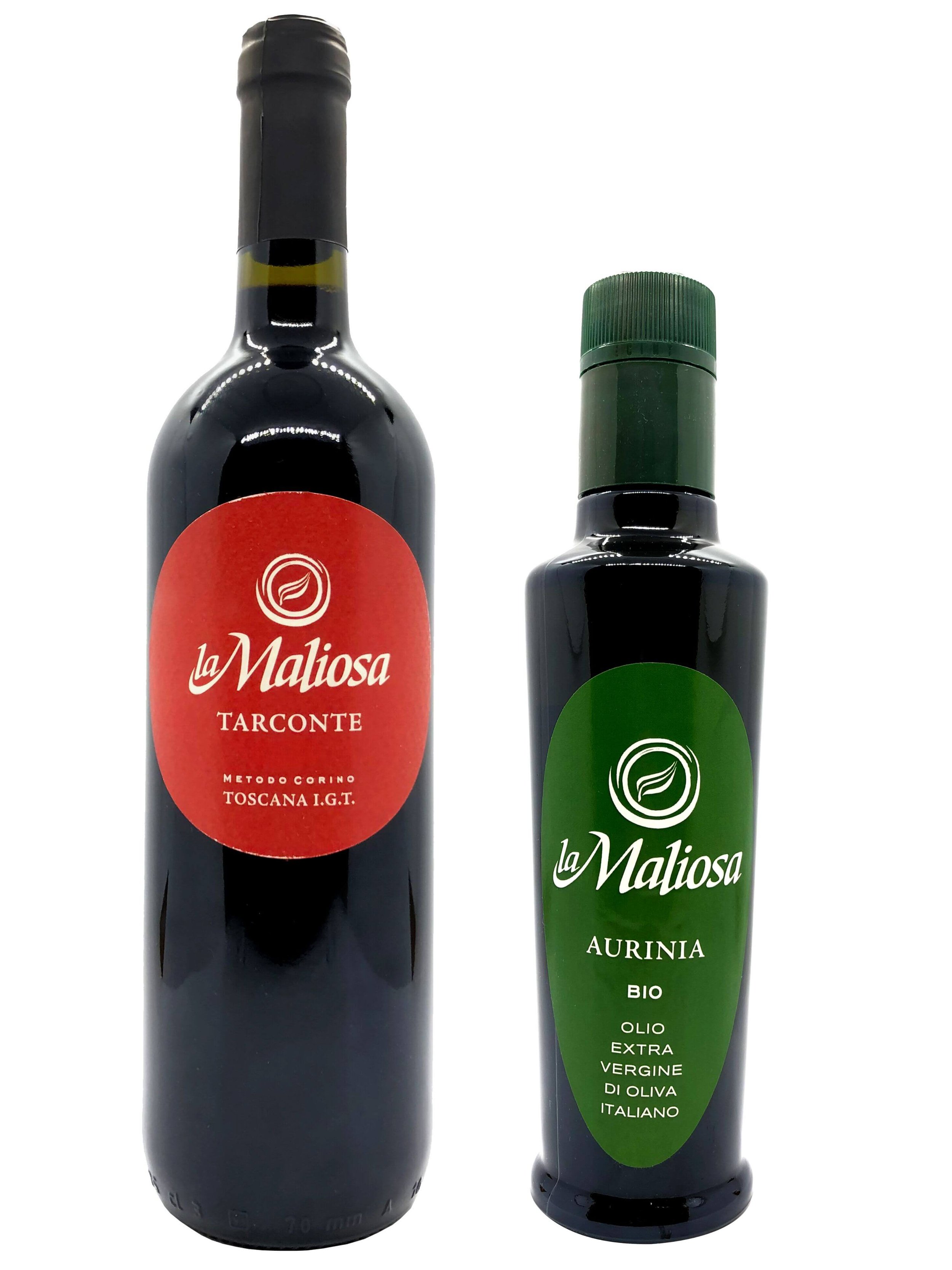Backyard to Table: Foraging and Cooking Straight from the Wild
Beatrice Calia, nicknamed L’Erbana, having us try one of the wild plants she foraged.
Beatrice Calia lives off the land, as we discovered last week’s article ‘Foraging for Nature's Wild Treasures’. A forager food expert, she is an author and educator specializing in something even more natural than farm to table, a movement we are dubbing ‘backyard to table’! A sustainable food option, foraging in your backyard and nearby nature for natures treasures and treats can not only provide healthy cooking options, but give you so much satisfaction and so many benefits. Today we interviewed Beatrice to learn directly from her how best and safely to forage for wild plants and what are her recommendations on how best to get started with this new trend.
When you were a chef, how did you come to discover this world of forgaging wild plants, herbs, and flowers?
The herbal world has always been a part of my life; when I was little my grandmother Tecla would teach me about ‘spontaneous friends’, or wild plants. I would go with her to pick malva (also known as mallow) for stomach aches, or nettles when she was over-tired. Daisies were used to bring smiles around the table, and she used elderflowers to make non-alcoholic spritzes. I found that when I eventually went to work in a traditional restaurant kitchen, it became monotonous and I soon went to work for a teaching-farm, and I began to remember my grandmother’s teachings and wild plants began to work their way back into my life.
I have always used them in my home kitchen, but I never really thought to offer dishes containing them to my customers who were looking to build a repetoir of recipes built around cereals, legumes, and vegetables. One cold Sunday in the beginning of spring, my garden was bare of herbs and vegetables, and I didn’t know what to serve. I created a wild soup and a wild flowering salad. It was a success, and that day my wild plants began to be a part of my work kitchen, not only in my home.
What drove you to study and learn to not only identify, but the uses for so many different wild and natural plants?
Wild plant forager and chef, Beatrice Calia, also known as L’Erbana.
I have found that the love of nature is something that scoops you up and pulls you along. I wanted to get to know the natural world: how it worked and moved, what was in its soul. So with this in mind, I began to slowly learn about the trees, forests, clearings, and hills. I wanted to also add on to my childhood wild plant knowledge and began to learn more of them and more importantly, their properties and uses. I found it was like meeting a new friend every day, and every leaf and page spoke to me and asked me to come uncover their characteristics, talents, and story. Wild plants and herbs fascinated me and stole my attention with how they work: how they can heal you or make you sick. We humans know so much about history, geography, literature, but often we don’t take the time to notice or learn about the creations that surround us like trees, grasses, herbs, flowers. I find this such a shame, like we have lost contact with mother earth.
I also believe that learning the ABCs and uses of these plants can allow us to be independent and fill us with power to and potential to take care of ourselves and be a part of the world that surrounds us. The earth shouldn’t be pillaged, but instead we should work to preserve and know the earth in all of its beauty and abundance, trying to be children worthy of this exceptional and amazing planet.
Beatrice’s basket filled with nature’s goodies.
When you are cooking and creating a dish, how do you pick which plants to use? Do you tend to start with a plant you have found and create a recipe around it, or do you go out and search for a plant that would work well in a chosen recipe?
The plants dictate the time and place I go out in nature and walk, and based on the season, drought, precipitation, and place, one finds different plants. That determines what I cook. These days I am cleaning out my garden waiting for the soon to begin nice weather, and soon it will be time to plant my vegetables. This means that I have recently harvested the sow thistle and borage (also known as starflower) that grew like crazy over the winter months in the bare ground.
I noticed recently that some small mustard plants and young nettles are ready to start harvesting as well. The first dandelions are beginning to flaunt their yellow splendor and the fields covered in wild daisies are truly a magnificent sight to behold.
This is why on Sunday when thinking about what to cook, I will make tagliatelle pasta green with the nettles, and this week I made salads with the dandelion leaves, the tiny daisies, and some wild blue star flowers. The sow thistles I roasted and ate sautéed with garlic and extra virgin olive oil. The green plan part of the starflower plant I will take to my mother later on for her to make some tortellini stuffed pasta.
But in short, the plants decide what goes on my table.
You have written a book, “L’Erbana: A Wild Woman in the Kitchen; Wisdom and Secrets for Healthy Eating and Natural Garnishes from Herbs and Flowers”. Where did you get the drive and inspiration to write this book?
In 2014 I was fortunate to meet and work with Liberesco Guglielmi, famous as the gardener of Italo Calvino [an Italian author famous for his novels]. Our lovely friendship and collaboration began because one day I was asked to cook for him and I enthusiatically threw myself into creating more than 30 dishes in his honor. He was a vegetarian (following the traditions of his parents and grandparents) and I wanted to give him the true abundance and all the generosity Mother Nature has to offer.
He asked me to join him at a conference after lunch, and while talking about various wild plants and flowers he told me that he enjoyed my company and knowledge so much that I should write a book. So I did!
Beatrice’s garden, wild and natural.
Do you have any particular goals to come out of your work?
All throughout my work, I want to communicate the necessity of being tied to nature, though both our food and direct contact with the plants that allow us to be connected body - mind - spirit with the Life around us. My work is pure joy; it is sharing in the beauty and cultivating and taking care of ourselves and everything around us. I have spent years to build a career that brings me this much satisfaction and joy, and now I am grateful for my life and myself to having been able to pull all of my passions together to create a profession. I walk in nature, cook natural foods, talk about the things that give me joy and happiness, and write about important emotions and relationships between all of the above. For all of this I am very grateful.
My goal, across everything, is to be able to effectively communicate to people that we do not need to fear future: mother nature will take care of us with all of her beauty and abundance. One just needs to realize that the Divine manifests itself in everything, and that healthy food is one of the best ways for a person to stay in good health.
What, in your opinion, are the biggest benefits that can change someone’s life by foraging for wild plants?
I have always said that one should not exaggerate with wild foraging from the start. I do not recommend using too many wild plants by someone that does not already consume daily different vegetables. I love to point out how wild plants are not domesticated or modified, and their effects could be devastating if used incorrectly. They do not know half-measures: they can be strong, powerful, detoxifying, and purifying. However, on the other hand, if one is only used to eating pre-cleaned bagged salad from the supermarket, a mix of wild greens could throw your digestive system into an uncomfortable disarray. But, if one begins to slowly introduce wild plants into a diet, it can make this transition easier. Not to mention, the first benefit you will see come of your new hobby being that you spend more time in nature, walking! Then, you can begin to discover new flavors and tastes, unusual and wonderfully authentic and unique. These wild plants will bring color, aromas, variety, and life to your table… after all they are ‘alive food’.
Beatrice points out a natural dandelion that could be used for so many different dishes.
It is to note that they are not ‘free’ as so many people like to say. Wild plants need to be harvested with much attention and care, always giving something back to nature and the earth. This may be cleaning up the forest floor or a creek bed, along a road, and most importantly we need to remember to not be predators and strip the land of these plants of which we are interested. Some element of the plant must always be left as we must remember that we are not the only creatures that desire to sustain ourselves using these very plants. These plants are part of an important and delicate ecosystem that needs to be respected, maintained and protected just as much as anything else.
Nature can teach us about variety, cooperation, and foraging for wild plants forces us to pay close attention to everything around us. It is important to keep your eyes cast both downward to recognize the plants, yet pointed upward to the sky in thanks for their beauty.
What are your favorite plants to search for and use in the kitchen?
The wild plants that are easiest to recognize are: the common nettle, sows thistle, dandelions, chives, Jerusalem artichokes, arugula (or rocket or rucola), and wild radicchio.
Natural Wines to Pair with Natural Foods
As we read Beatrice’s philosophy and world view, we can’t help but draw parellels to and think about natural wine as well. In Maremma, Tuscany, woman winemaker and founder of La Maliosa Farm and Winery Antonella Manuli is a woman with a similar approach to nature. Through the ‘Metodo Corino’, a patented set of procedures for making natural wines based on regenerative farming principles, that she developed along with Lorenzo Corino, she makes natural wine, and award winning, top organic extra virgin olive oil too. Antonella is committed farming and crafting her wild wine and organic evoo in a healthy ecosystem that allows plants to go about their natural growth untouched by modern technology and chemicals. And we love her natural wines because they have aromas and tastes that take you to the vineyard and the natural habit of her wild winery in Tuscany.
We sell La Maliosa’s Wild & Scarce Wines and Olive Oils to businesses and consumers around the country. For wine trade businesses, contact us to get product pricing otherwise head to our online store and buy. We ship to most states across the US.
Subscribe to our newsletter to keep on top of the interesting, fun and delicious things we have to share, there will be a recipe coming up soon from Beatrice!













